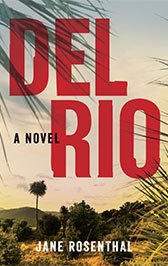California’s Central Valley has always held a special place in the state’s ecological system. Covering about 20,000 square miles, the region is flanked on every side by mountain ranges including the Cascades, Sierra Nevada, Thachapi, and Coast ranges. And the valley boasts more than just those impressive mountain ranges; it also offers several naturally occurring bodies of water that shape the environmental and geographic quality of the region.
The valley sits east of the San Francisco Bay, but it has its own water sources as well. Several major rivers flow from their headwaters in the mountains into the valley. The Sacramento River Basin and San Joaquin River basin both originate in the Sierra Nevada before draining down to nourish the Central Valley landscape. There is also the Tulare Lake Basin which has been developed extensively for agriculture use. However, these major basins only skim the surface of the Central Valley’s water sources.
Jane's second novel!

A once-thriving Central Valley farm town, is now filled with run-down Dollar Stores, llanterias, carnicerias, and shabby mini-marts that sell one-way bus tickets straight to Tijuana on the Flecha Amarilla line. It’s a place . . .
63,500 miles of rivers and streams
Though each river basin begins with a major river in the mountains, once the water flow reaches the valley it separates into several smaller tributaries. For example, the Sacramento River Basin includes the Feather, Yuba, and American Rivers, each connecting back to the Sacramento River itself. These basins have been highly cultivated to support farmland and the broader valley landscape, with canals being used to replenish the river water when necessary. California is known for its dry seasons, and the Central Valley is no different. Therefore, it’s crucial to the people and wildlife of the surrounding area to restore the rivers and tributaries during droughts.
Floating on by
Due to California’s predisposition to droughts combined with new housing and farming developments, the lakes and rivers in the Central Valley have not been as full as they once were. However, unexpectedly heavy rain and snow in the beginning of the year has caused water levels to rise, leading to what some are calling the return of Tulare Lake. Experts cite this as the wettest year for the region since 1983. The replenishment of the Central Valley’s rivers and lakes is not only beneficial for wildlife and the environment, but it is helping to return the valley to its majestic state.
